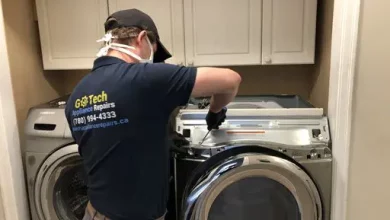Guide on Smart Heating Systems: A Comprehensive Overview

Welcome to the ultimate guide on smart heating systems! As technology continues to advance, our homes become smarter and more energy-efficient. Smart heating systems are no exception to this trend. Gone are the days of manually adjusting thermostats and wasting energy on an empty house. With smart heating, you can control your home’s temperature from the palm of your hand. This guide will take you on a journey through the fascinating world of smart heating, offering valuable insights and practical advice.
The Basics of Smart Heating Systems
Smart heating systems, also known as intelligent heating systems, utilize cutting-edge technology to optimize temperature control in your home. These systems employ sensors, smart algorithms, and internet connectivity to provide precise and automated heating solutions. From learning your preferences to adjusting according to weather conditions, smart heating offers convenience and energy savings.
How Do Smart Heating Systems Work?
At the heart of smart heating systems are smart thermostats. These devices are the brain of your heating setup. They communicate with your heating equipment, such as boilers or furnaces, and enable you to manage your home’s heating remotely through dedicated apps or voice assistants like Amazon Alexa or Google Assistant.
LSI Keywords: Smart Thermostats, Heating Equipment, Remote Heating Control
Advantages of Smart Heating Systems
Investing in a smart heating system comes with numerous advantages that go beyond mere convenience. Let’s explore some of the key benefits:
- Energy Efficiency: Smart heating systems optimize energy consumption, reducing wastage and lowering utility bills.
- Cost Savings: By efficiently managing heating, you can expect substantial savings on your energy bills over time.
- Environmental Impact: Decreased energy usage leads to a reduced carbon footprint, contributing positively to the environment.
- Personalized Comfort: These systems adapt to your preferences, ensuring your home is always at the ideal temperature.
- Remote Access: Control your heating system from anywhere, providing flexibility and peace of mind.
- Learning Capabilities: Smart heating systems learn your habits and adjust settings accordingly, further enhancing efficiency.
Compatibility with Existing Heating System
When selecting a smart heating system, compatibility with your existing heating equipment is crucial. Ensure the smart thermostat is compatible with your boiler, furnace, or heat pump to avoid compatibility issues.
Installation of Smart Heating Systems
The installation process of smart heating systems may vary depending on the model and manufacturer. While some systems are DIY-friendly, others may require professional installation. Let’s take a closer look at the general steps involved in installing a smart heating system:
- Step 1: Assess Compatibility
Before purchasing a smart heating system, verify its compatibility with your current heating equipment. If uncertain, consult a professional HVAC technician.
- Step 2: Turn Off Power
For safety reasons, turn off the power supply to your heating system before starting the installation process.
- Step 3: Remove Old Thermostat
If you have an existing thermostat, carefully remove it from the wall. Be cautious not to damage any wires.
- Step 4: Wire Labeling
Label the wires connected to the old thermostat to ensure correct connections with the new smart thermostat.




